Introduction
The shoebill (Balaeniceps rex) is a large carnivorous waterbird, similar to a stork. In fact, they were once thought to be a stork and are still sometimes referred to as the shoe-billed stork and whale-headed stork. However, they are actually more closely related to pelicans and are now classified in a family of their own.1https://www.nationalgeographic.com/animals/birds/facts/shoebill In Uganda, they can be found on Lakes Bisina, Opeta and Nakuwa in the east, on the west side of Lake Victoria, on Lake Mburo and Lake Edward in the southwest, and Murchison Falls in the northwest.2https://www.unep-aewa.org/sites/default/files/publication/ts51_ssap_shoebill_0.pdf
Shoebills are vulnerable to extinction and their population is declining across Africa. There are thought to be between 5,000 and 8,000 left in the wild with only between 100 and 150 left in Uganda.3https://www.iucnredlist.org/species/22697583/133840708#population Some sources state the population in Uganda is between 200-300 birds2https://www.unep-aewa.org/sites/default/files/publication/ts51_ssap_shoebill_0.pdf, and some more optimistic estimates say around 1,000.4https://www.murchisonfallsparkuganda.com/information/shoebill-stork-bird-in-uganda/ But, according to the IUCN Red List, “the species may be more threatened than available information suggests.”3https://www.iucnredlist.org/species/22697583/133840708#population
In the wild, a shoebill can live for 35 years but they have been known to live for 50 years in captivity.
Fascinating facts
Big bird!
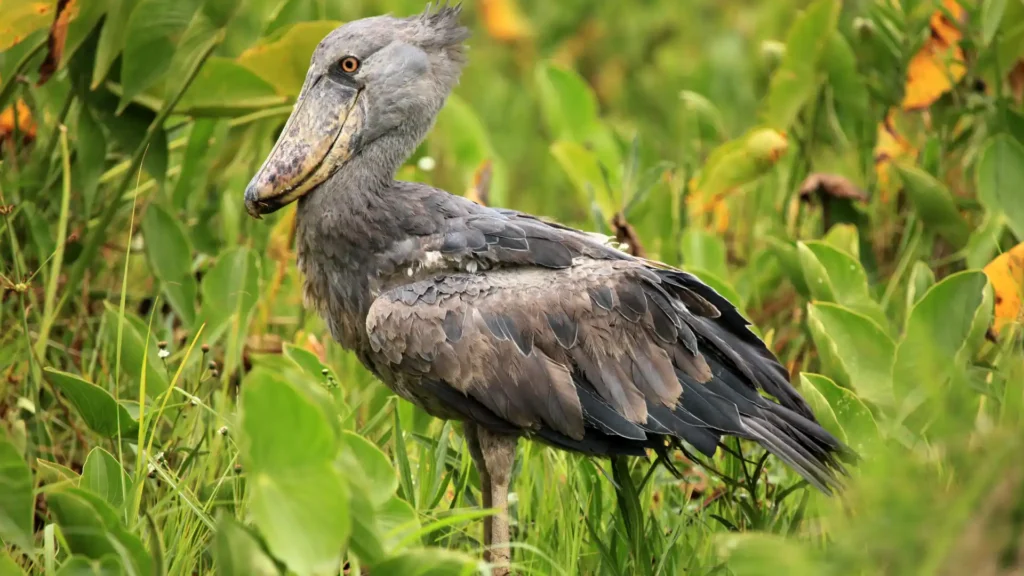
If you bumped into a shoebill in the wild, you’d be forgiven for thinking you entered Jurassic Park. The gigantic prehistoric-looking bird can be five feet tall, with an eight-foot wingspan. They are surprisingly light for such a big bird, weighing in at just under one stone (5.6 kg). This enables them to stand on floating vegetation in swamps, on the lookout for prey.
Bizarre but brilliant beak
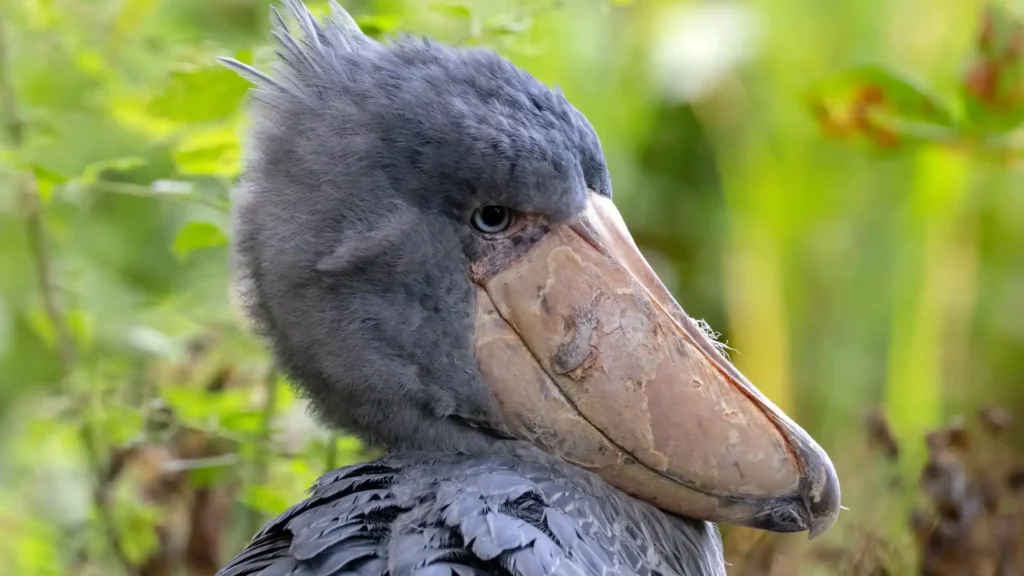
Shoebills get their name from their large beak which looks like a shoe, especially a wooden Dutch clog. The beak can be one foot long and five inches wide. It is perfectly designed for snapping up prey, with sharp edges and even a hook on the end.
Ambush predator
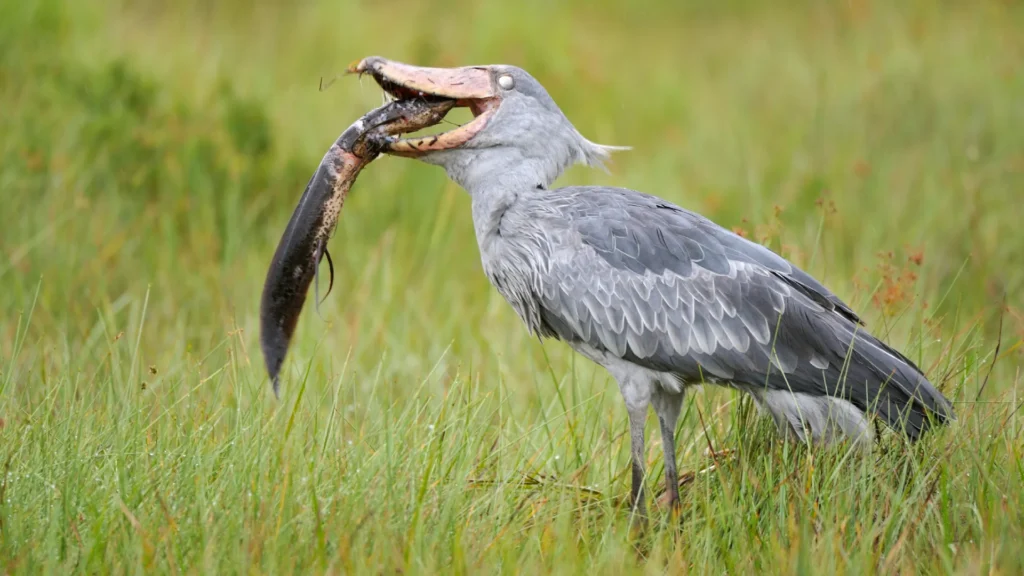
Shoebills prey on fish, eels and snakes, as well as baby crocodiles and Nile monitor lizards. They can stand as still as a statue for hours waiting for a lungfish or aquatic reptile to come up for air. When it does, the shoebill lunges onto their prey, which looks like they are falling or collapsing.
Silent but deadly
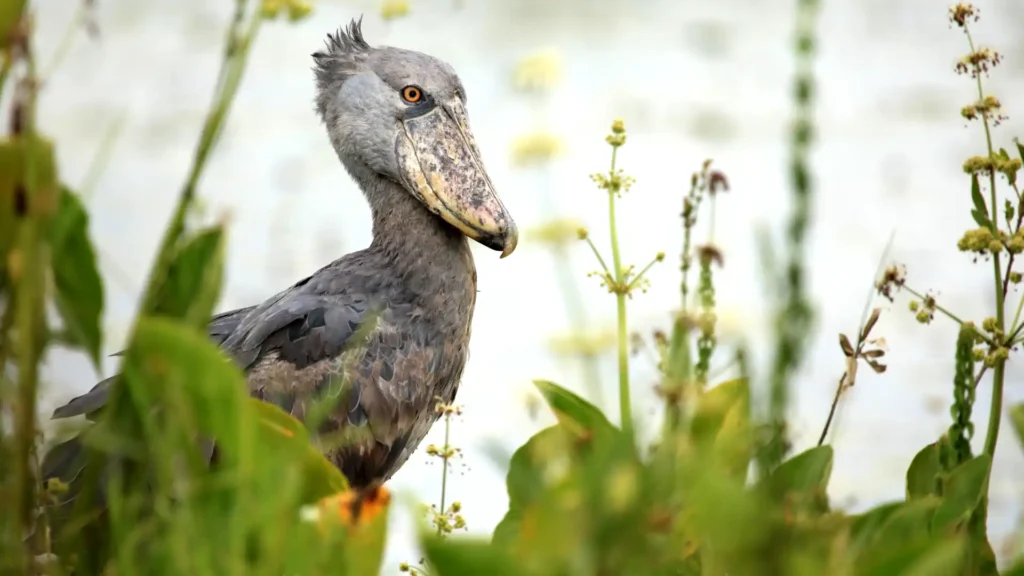
Shoebills don’t make much noise, because that would scare their prey away. They do make bill clattering noises near their nest or to greet other shoebills though. Baby shoebills make hiccup-like sounds when they are hungry.5https://blog.animalogic.ca/animals/shoebills
Solitary bird
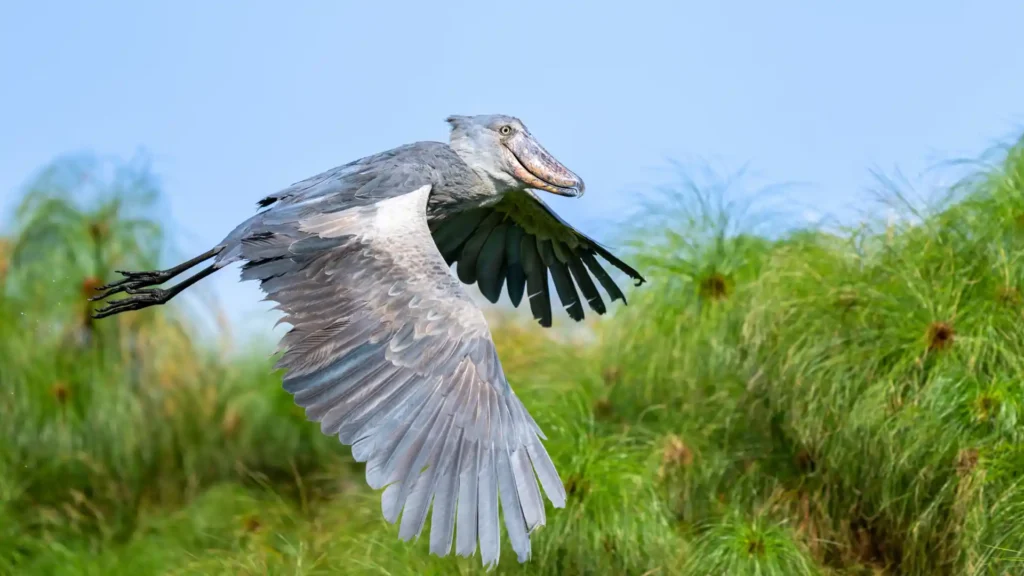
Shoebills are solitary birds but form a breeding pair for the mating season, when they reach three or four years old. The pair will build a huge floating nest together, which can be eight feet wide. Even though they form a pair and look after the eggs together, they still prefer to hunt on their own.
Survival of the strongest

The female can lay several eggs but the parents will choose to raise only the strongest chick when they hatch after a month. This means the chicks have to compete with each other to be the chosen one. The chicks can fly when they are 16 weeks old but they depend on their parents for a few more weeks before they hunt for themselves.5https://blog.animalogic.ca/animals/shoebills
Threats to shoebills
Habitat loss

Habitat loss due to animal farming is the greatest threat to shoebills. As a result of Uganda’s population growth, expanding towns and cities, and an increased income for wealthier Ugandans, the demand for meat and dairy is likely to dramatically rise in the coming years. The FAO estimates that by 2050, the demand for meat and milk products in Uganda will more than double and “the production of all types of meat and that of milk will increase by 164 and 41 per cent, respectively.”6https://www.fao.org/3/ca7009en/CA7009EN.pdf
To produce these animal products, land that is home to the shoebill is being turned into farmland. The swamps in which the shoebills live are being drained and turned into cattle farms, stripping the birds of their natural habitat and making it impossible for them to survive. Any birds that remain have their nests trampled by cattle and their habitat trashed.1https://www.nationalgeographic.com/animals/birds/facts/shoebill Fires set to clear land for renewing grassland for livestock are a major threat to shoebills.2https://www.unep-aewa.org/sites/default/files/publication/ts51_ssap_shoebill_0.pdf To make matters worse, oil exploration in Uganda is disturbing the birds and polluting their environment.7https://www.iucnredlist.org/species/22697583/133840708#threats
Of course, a growing population needs food but it would be much more sustainable to meet these needs through the growing of crops instead of farming animals. Animal farming requires the most land and resources because land is used for grazing as well as growing food for the animals. It is also a very inefficient system. To get just one kilogram of beef from a cow, you have to feed them 25 kilograms of crops – only a tiny amount of protein and calories in the crops gets converted to beef. In other words, you have to put a lot of food into an animal but get very little back. It would be better if humans just ate the crops instead of the cow!
The more animal-based foods we eat, the more natural habitats we lose. However, crops are a far more efficient way to feed the growing population and use less land and other natural resources. A vegan diet is associated with only half the cropland demand, grazing intensity and overall biomass harvest of meat-based diets8https://www.nature.com/articles/ncomms11382 so switching to a vegan diet would have a phenomenal impact on reducing habitat loss in Uganda.
Hunting
In Uganda, shoebills are sometimes hunted for food due to traditional practices. Although this is not a widespread problem, with so few shoebills left in the wild, it cannot be ignored.
Some in Uganda incorrectly believe that a shoebill sighting brings bad luck to fishermen, and as a result shoebills are sometimes killed by the fishermen. It is therefore much more accurate to say that the sighting of a fisherman brings bad luck to the shoebill.
Illegal pet trade
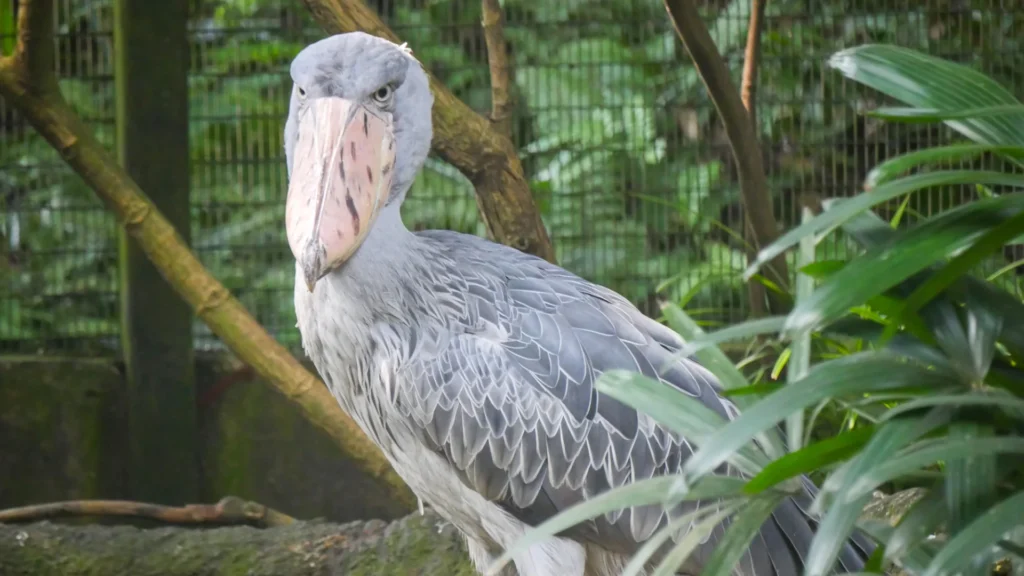
Because of their unique and interesting appearance, shoebills have suffered horrendously due to the illegal trade in exotic animals for zoos and private pet collections. International trade in shoebills has now been banned in all of the shoebills’ home countries, including Tanzania as of 2011, which was by far the biggest exporter of the bird.2https://www.unep-aewa.org/sites/default/files/publication/ts51_ssap_shoebill_0.pdf Illegal trade is still a problem though, especially because shoebills have a very low survival rate once captured unless they receive exceptional care – not a quality illegal animal traders are well known for.
References
References
- 1
- 2
- 3
- 4
- 5
- 6
- 7
- 8

